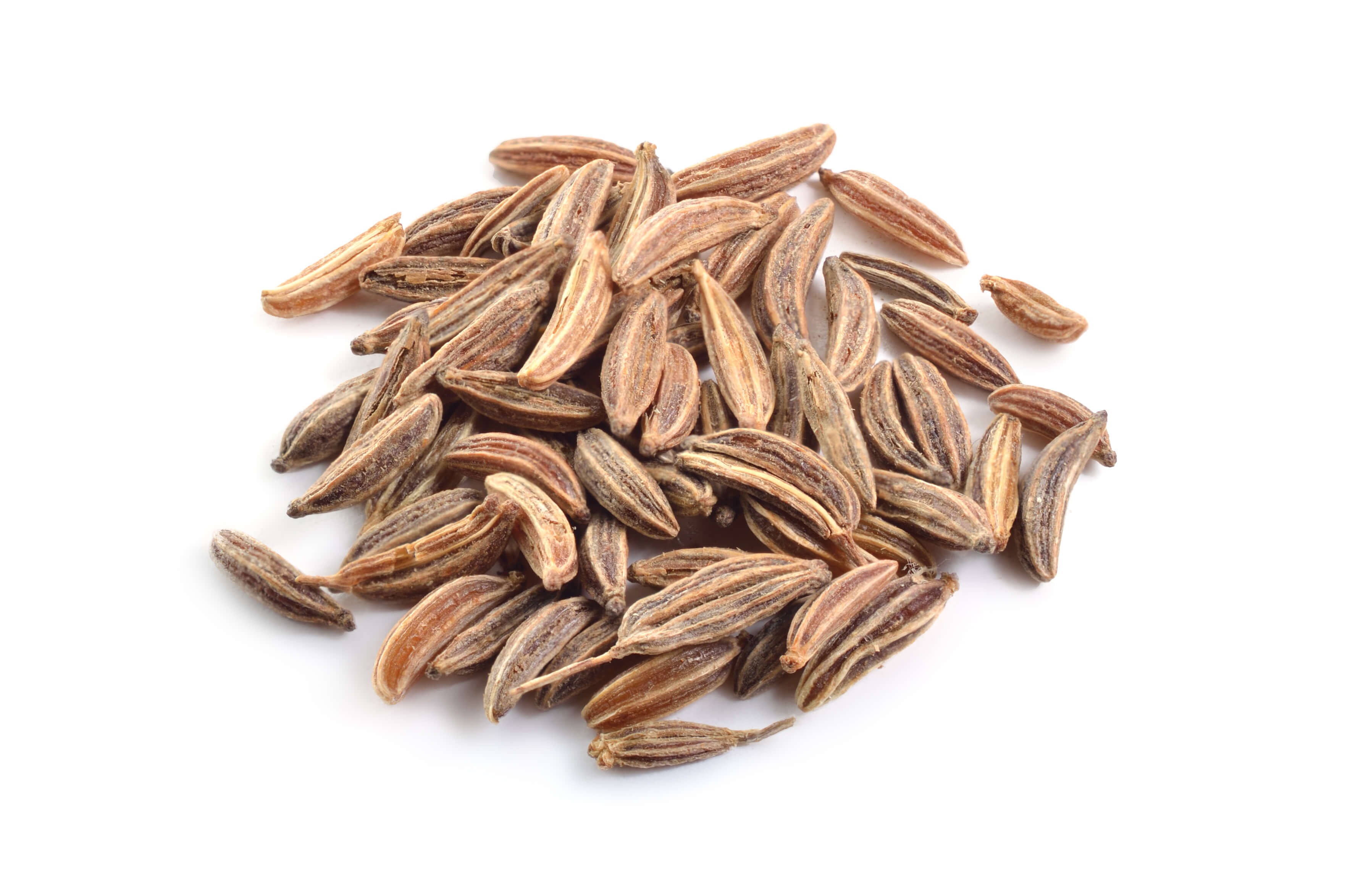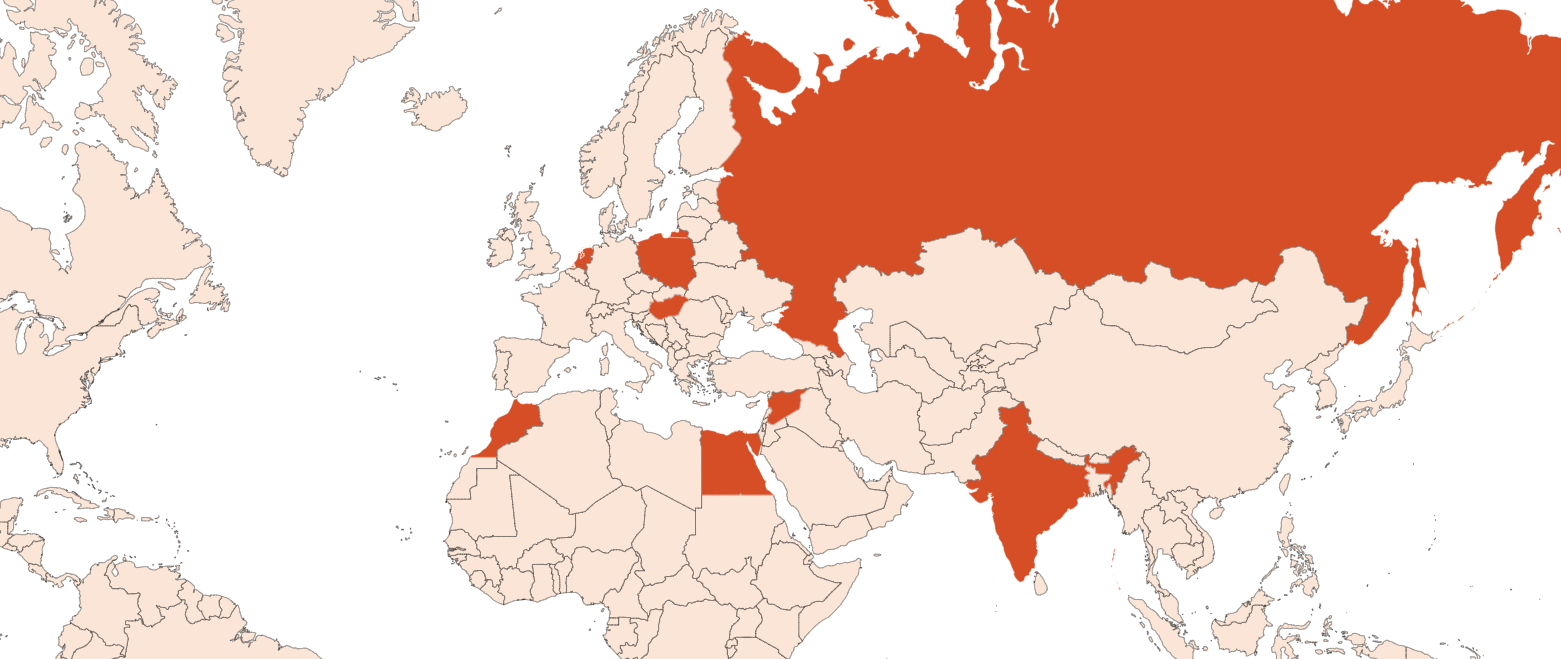Caraway EO
Naturelle
Herbal > Minty > Anisic > Spicy > Fatty

Crédits photo: ScenTree SAS
Latin name :
Carum carvi
Botanical profile :
Caraway is a seed of the Apiaceae family, and of the genus Carum.
Geographic origin :
Originally from Asia, Europe and North Africa (discovered in the Middle East 5000 years ago), caraway is now grown mainly in the Netherlands, Poland, Hungary and Russia in Winter, and in India, Syria, Morocco and Egypt in spring.
Chemotypes :
20 species belong to the genus Carum.
Caraway is the most cultivated plant among all these species and has the greatest economic interest.
Carvi is often confused with black caraway (Carum bulbocastanum) and nigella (Nigella sativa), which both have an olfactory interest but are less cultivated than caraway.
It is well-known that the caraway extraction yield quality is better at high latitudes (farther north) than in a warmer climate. The composition of the essential oil also varies according to the places of culture.
Caraway is the most cultivated plant among all these species and has the greatest economic interest.
Carvi is often confused with black caraway (Carum bulbocastanum) and nigella (Nigella sativa), which both have an olfactory interest but are less cultivated than caraway.
It is well-known that the caraway extraction yield quality is better at high latitudes (farther north) than in a warmer climate. The composition of the essential oil also varies according to the places of culture.
Extraction process :
Each year around the world, 30 to 40 tons of caraway essential oil are produced on average, producing 15,000 tons of seeds each year.
The cultivation of caraway is done at low altitude for annual seeds, and at high altitude for biannual seeds. The fields need to be very sunny, with moderate temperatures.
The propagation of a crop is done by sowing caraway seeds from March to April (in temperate zone) and from October to November (in sub-tropical zone), with a space of a few tens of centimetres between each plant. For each hectare of cultivated land, 8 to 10 kg of seeds are needed. The cultivation is carried out 4 to 15 months after planting the seeds, and allows to cultivate 1 to 3 tons of seeds per hectare cultivated, depending on the type of seed (the yield is better for the biennial caraway).
After the cultivation, the seeds are rinsed and dried until a 10-12% moisture content and stored in bags away from moisture and light. Before the extraction, seeds are crushed to improve the yield of the essential oil. At the end of the process, the extraction is made by hydro distilling the dry seed to obtain the essential oil by decantation. The extraction yield is between 70 and 160 kg of essential oil per hectare of culture, meaning the seeds yield is of 30 to 60 ‰.
An extraction with volatile solvent is possible and provides a warm, aromatic and pleasant smell.
Another distillation allows to bleach the essential oil and to extract the natural D-Carvone.
The cultivation of caraway is done at low altitude for annual seeds, and at high altitude for biannual seeds. The fields need to be very sunny, with moderate temperatures.
The propagation of a crop is done by sowing caraway seeds from March to April (in temperate zone) and from October to November (in sub-tropical zone), with a space of a few tens of centimetres between each plant. For each hectare of cultivated land, 8 to 10 kg of seeds are needed. The cultivation is carried out 4 to 15 months after planting the seeds, and allows to cultivate 1 to 3 tons of seeds per hectare cultivated, depending on the type of seed (the yield is better for the biennial caraway).
After the cultivation, the seeds are rinsed and dried until a 10-12% moisture content and stored in bags away from moisture and light. Before the extraction, seeds are crushed to improve the yield of the essential oil. At the end of the process, the extraction is made by hydro distilling the dry seed to obtain the essential oil by decantation. The extraction yield is between 70 and 160 kg of essential oil per hectare of culture, meaning the seeds yield is of 30 to 60 ‰.
An extraction with volatile solvent is possible and provides a warm, aromatic and pleasant smell.
Another distillation allows to bleach the essential oil and to extract the natural D-Carvone.
Major Components :
D-Carvone (46-60%)
D-Limonene (38-52%)
trans and cis-Carveol (0-2%)
trans and cis-Limonene epoxide (0-2,5%)
D-Limonene (38-52%)
trans and cis-Carveol (0-2%)
trans and cis-Limonene epoxide (0-2,5%)
- Uses in perfumery :
- Most often used in Home Care and Body Care products to provide a clean, fresh and minty effect. Brings a note that is both minty and zesty.
- Other comments :
- The essential oil contained in the caraway seed depends on its culture frequency. The biannual caraway contains up to 5% essential oil, while the caraway grown only once a year contains up to 3.3%.
The quality of a caraway seed is judged on its maturity, colour, size, weight and the composition of its essential oil.
The essential oil must contain 47 to 81% of Carvone, 9 to 48% of Limonene-D, have little to no colour and must have certain physical characteristics. Those criterias compensate various adulterations by adding less expensive extracts in the essential oil (seeds of bad quality, plant stem, ryegrass ...). - Volatility :
- Head/Heart
- Appearance :
- Colorless to pale yellow liquid
- Stability :
- Solubility issues in perfumes
The terpenes identified in this raw material can polymerize when they are oxidized
D-Limonene tends to convert into Carvone through time, and to give a minthy note to the oil - Price Range :
- €€
- Aromatherapy :
Informations provided below are taken from reference works in aromatherapy. They are given for information purposes only and can not constitute medical information, nor engage the responsibility of ScenTree.
Carvi is known for its mucolytic, choleretic properties (facilitates the secretion of bile) and is recommended in case of catarrhal bronchitis and biliary insufficiency.

Crédits photo: ScenTree SAS
- EINECS number :
- 288-921-6
- FEMA number :
- 2238
- Allergens :
- This ingredient does not contain any allergen.
- IFRA :
- This ingredient is restricted by IFRA
- Annexe I :
- Some regulated synthetic ingredients are found in nature and in certain proportions in natural ingredients. This presence in nature has to be taken into account when calculating limits of use recommended by the IFRA. In case you do not know these concentrations, you can use the ones estimated by the IFRA. Here they are :
- Annexe I :
- Some regulated synthetic ingredients are found in nature and in certain proportions in natural ingredients. This presence in nature has to be taken into account when calculating limits of use recommended by the IFRA. In case you do not know these concentrations, you can use the ones estimated by the IFRA. Here they are :
| List of regulated compounds contained in this ingredient | ||
|---|---|---|
| Regulated ingredient name | CAS N° | Estimated Concentration |
| Perilla aldehyde | 2111-75-3 | 0,1 |
| d-Carvone | 2244-16-8 | 59 |
| List of regulated compounds contained in this ingredient | ||
|---|---|---|
| Regulated ingredient name | CAS N° | Estimated Concentration |
| Perilla aldehyde | 2111-75-3 | 0,1 |
| d-Carvone | 2244-16-8 | 59 |
To learn more about IFRA's standards : https://ifrafragrance.org/safe-use/library
ScenTree is solely responsible for the information provided here.

